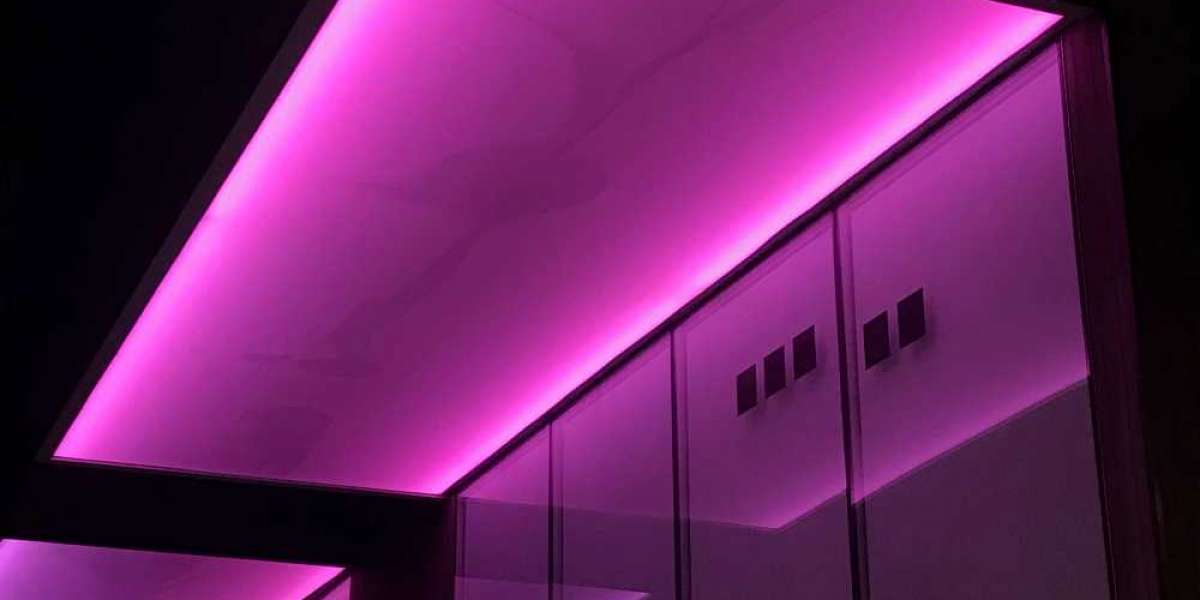How do UV LEDs work? Why are they used so extensively in paint manufacturing, polymer curing or water treatment? Want to know more about these components? Are they comparatively energy savers, or are they expensive? Discover the advantages of UV LEDs and learn more about high power LEDs.
What is UV LED?
A UV LED is a UV light-emitting diode, a solid-state device emitting ultraviolet light. It is not visible to the human eye and mostly appears as a blue-purple haze. These UV LED units are commercially available and emit 400 nm or less wavelengths. The range begins from near-ultraviolet LEDs, NUV-LEDs, and deep-ultraviolet LEDs and emits wavelengths of about 300-400 nm and 200-300 nm, respectively. The p-n junction, which is the depletion region, creates a flow of charge carriers.
What are High Power LEDs?
High Power LEDs are specialized light-emitting diodes that emit high brightness and intensity. Their most common use is in applications that require intense illumination, such as automotive headlights and outdoor lighting. These are energy efficient and generate the needed lumen outputs or higher levels of light output than traditional indicator LEDs.
As per design, these components operate at several hundred mA and have a power of 1W or more. However, one of the biggest challenges of using these components is that they generate a large amount of heat. Because of this, unique heat dissipation technologies are used with them.
These are used in the form of chips as well, in applications such as general lighting, LED strip lights as well as outdoor and industrial lighting. These are successful as LED downlight and LED tracking lights.
What are the Types of UV LED?
UV light is a form of electromagnetic energy not visible to humans. Thus, the UV light can be categorized into UV-A, UV-B, and UV-C, emitting at an average wavelength of 315-400 nm and 100-280 nm. One type of UV-C light is used in germicidal or UVGI, ultraviolet germicidal irradiation.
What Materials are Used in UV LEDs?
One primary material in UV LEDs is gallium nitride or aluminum gallium nitride. Given that these materials operate at wavelengths of 360 nm and higher, different proprietary materials are used if the wavelength needs to be shorter.
The most common substrate for growing UV LEDs is sapphire. Sapphire is transparent, inexpensive, and widely available. When used with AlN buffer layers, it provides a good foundation for UV emitters.
Near UV and UVA LEDs use InGaN in the active region and are mostly grown on sapphire substrates. Aluminum gallium nitride is the preferred material for wavelengths below 365 nm.
What are the Ways To Power LEDs?
Since high-power LEDs consume significant power, they need high-power sources. The most common sources are DC-DC converters with current feedback features. It is the most efficient, as these use circuits that use LC filters to smoothen out switching action into constant voltages.
Another way to power these high-power LEDs is the buck/boost converter. These are the most appropriate LED drivers for all applications. Alternatively, high-power LEDs have an output voltage that requires at least a few volts more than the LEDs' total forward voltage rating. To switch on the LED, the output power has to be above the diode forward voltage and forward current.
What is the Efficiency of High Power LEDs?
The efficiency of high-power LED averages between 40 and 50%, compared to incandescent lamps, which have an efficiency of 10-20%. However, LED light bulbs have a higher efficiency of 95% energy conversion to light, unlike traditional bulbs with 85% efficiency. However, in theoretical terms, the maximum efficiency of LEDS is calculated based on converting input energy into photosynthetic photons. In the case of Blue LEDs, the efficiency is 93%, while phosphor white LEDs have 76% conversion and Red LEDS have 81% efficiency.




